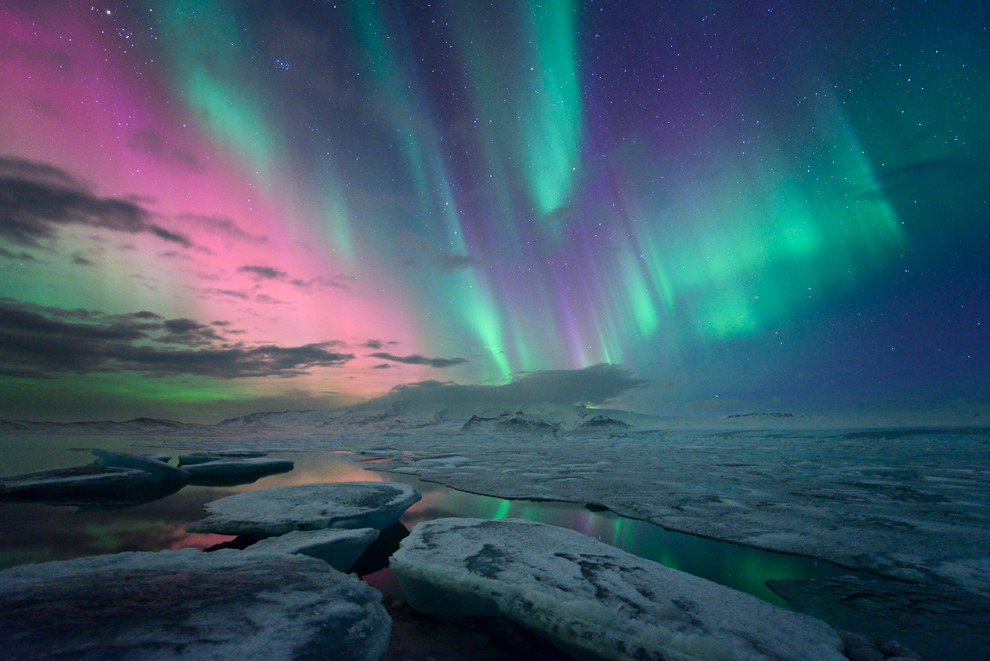Iceland is home to some of the world’s most beautiful natural sights, but none seem to compare to the phenomenon that is the aurora borealis. The iridescent bands of green, yellow, pink, purple and white lights swirling around the sky have been awe-inspiring throughout history, transcending different cultures from different periods of time.
For centuries, scientists, explorers and indigenous people from different parts of the world have witnessed the northern lights, and each have their own explanation for this wonder of the world. Carvings into cave walls dating back 30,000 years could be the earliest depiction. The first written description of the aurora is from 2,600 BC in China. The “glowing clouds” have also been recorded in other written works including Viking texts, the Old Testament and Aristotle’s “Meteorology.”
But it wasn’t until the 1600s that this sight got its name. Galileo Galilei and Pierre Gassendi witnessed the lights in all their glory and dubbed them aurora borealis (“northern dawn”) after Aurora, the Roman goddess of morning, and Boreas, the Greek name for the north wind.
People have chalked the northern lights to gods, spirits and magical creatures, but in reality, it’s all science. The vibrant colors in the sky are a result of high energy particles from space and the Sun slamming into the Earth’s magnetic field. These particles are pushed down into our atmosphere where they produce striking colors and shapes between 60-250 miles above our heads.
From color to shape to vibrancy, the aurora’s appearance can change each second. It typically first appears as an arc from east to west across the sky, and then develops into streams and stripes, pulsing globes and thin rays or patches of light. The most common color is a pale yellowy green, which is created when the molecules are around 60 miles above the Earth. When the particles are at higher altitudes (over 200 miles), they give off ruby red auroras. Lower altitudes usually produce blue light and higher altitudes glow with purple and violet tones.
From October through March, Iceland is a hotspot for northern lights sights, due to the length of darkness, long nights and less water vapor in the atmosphere. Staying in Reykjavik? Venture further north to the Westfjords region or Thingvellir National Park, and the hours of darkness increase, also increasing your chance of catching a sight of the northern lights. The brightest auroras can be seen from cities and even through thin clouds, but clear skies, a small moon and no surrounding light will lead to the prime conditions to catch a glimpse of the lights.
Tourists travel to Iceland from far and wide to witness aurora borealis with their own eyes, but for different cultures in history, it hasn’t always had qualities of beauty and amazement. For people of Poland, Prussia, Germany, Denmark and Estonia, the phenomenon provoked fear and was a sign of doom. In Norway, there was no waving, whistling or staring at the aurora because it could reach down and touch you, leading to bad events. Icelandic folklore warns against pregnant women gazing at the lights or her child will be born cross-eyed. It wasn’t all fear however, with the Inuits imagining it as souls at play, and Finnish tales attributing the lights to Arctic foxes starting the fires in the sky by brushing their fur along the snow.
The aurora borealis is just one more reason to plan a trip to Iceland. See for yourself what makes this such a phenomenon. Plan your visit with Icelandair, and click here for more information on the northern lights!


Comments
article Next
article